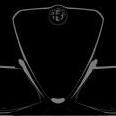Mercedes-AMG M139: il 4 cilindri benzina da 421 CV
-
Contenuti simili
-
Mercedes-Benz CLA Shooting Brake III 2025 (Spy e teaser) 1 2 3 4 10
Pubblicato da Pandino,
- cla iii 2025
- mercedes spy
- (e 3 altri in più)
- 93 risposte
- 22382 visite
-
- 4 risposte
- 855 visite
-
Mercedes-Benz Classe E Electric 2026 (Spy) 1 2
Pubblicato da j,
- classe spy
- classe e
- (e 15 altri in più)
- 10 risposte
- 1952 visite
-
-
-








.thumb.jpg.902d2a4f20a129e92b6f6920407b81bd.jpg)












Messaggi Raccomandati:
Crea un account o accedi per lasciare un commento
Devi essere iscritto per commentare e visualizzare le sezioni protette!
Crea un account
Iscriviti nella nostra community. È facile!
Registra un nuovo accountAccedi
Sei già registrato? Accedi qui.
Accedi Ora